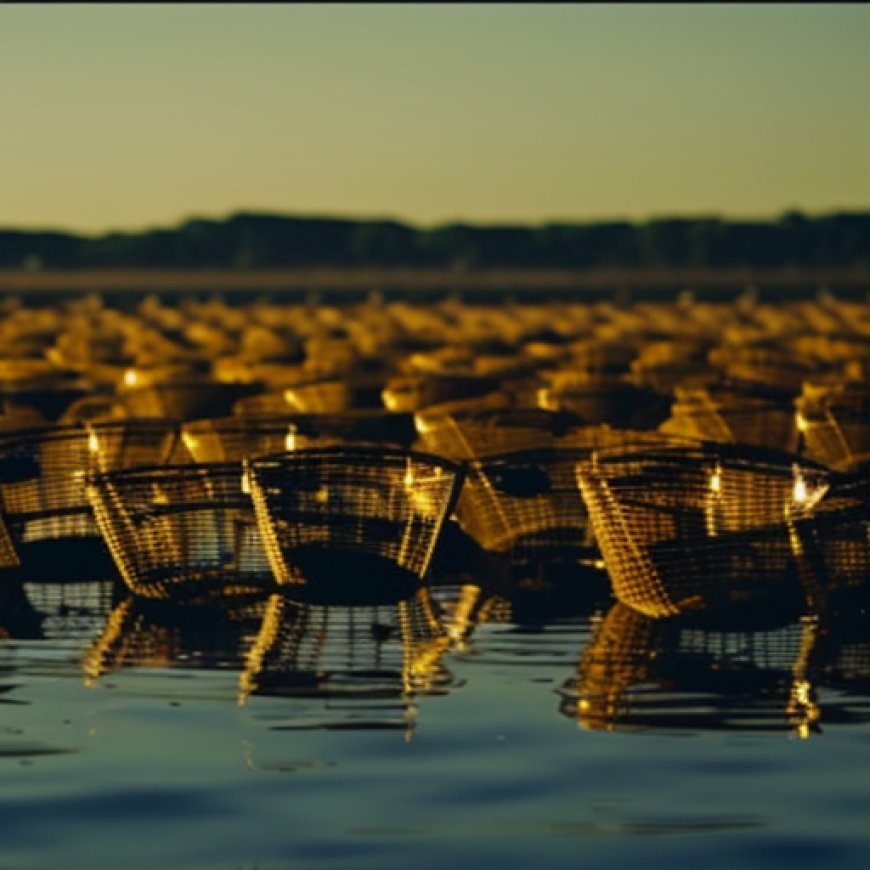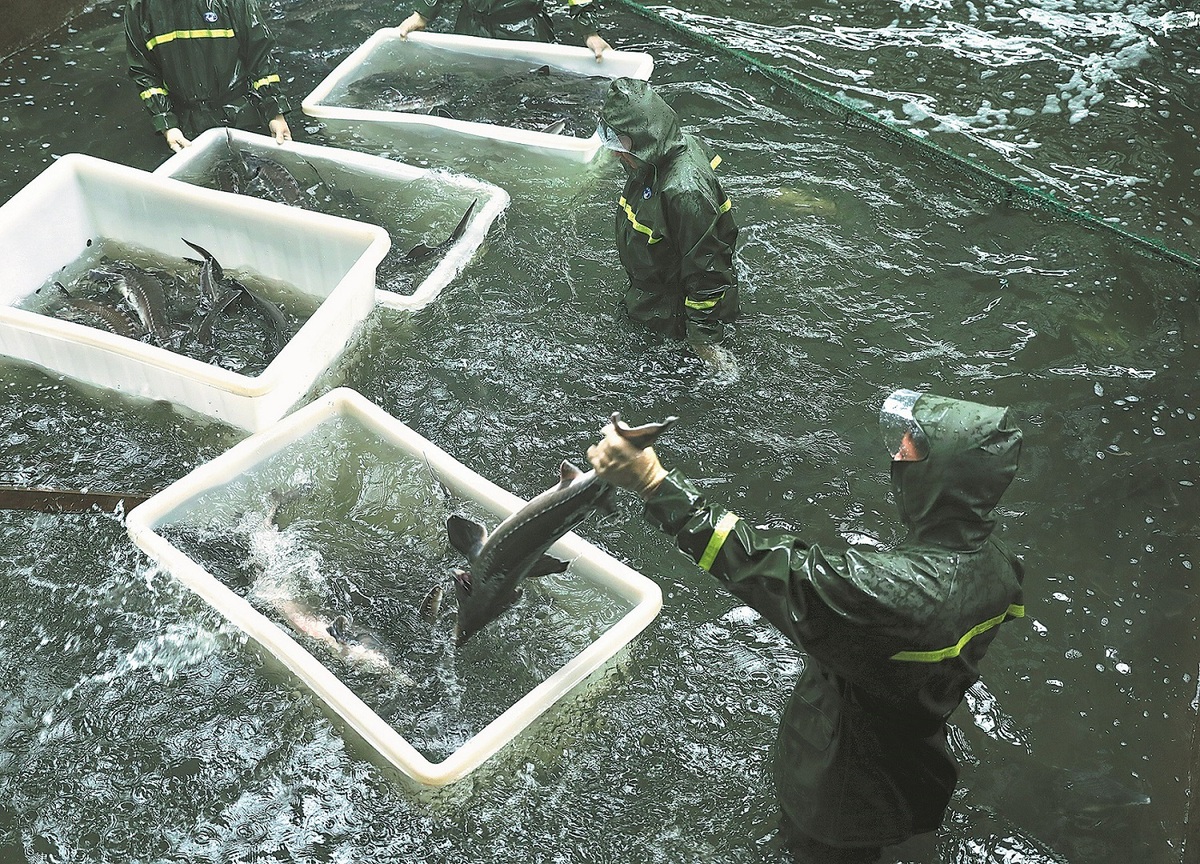Fish farming on dry land nets multiple catches
Fish farming on dry land nets multiple catches China Daily


Supporting Sustainable Development Goals through Green Fish Farming in Yidu, Hubei Province

In Yidu, Hubei province, Deng Zhongzheng used to spend day and night tending to his floating fish farm on the Qingjiang River to support his family of five. However, his livelihood was at the mercy of the weather and unpredictable floods could wipe out his entire school of fish. Despite the potential for high income, the risks were significant.
In 2016, the government of Yidu made a decision that changed Deng’s life and the fate of fish farmers in the region. They ordered all floating fish farms to operate onshore. This decision had two positive outcomes – securing fish farmers’ incomes and improving the cleanliness of the Qingjiang River, which is a major tributary to the Yangtze, Asia’s longest watercourse.
Disorderly Development and Environmental Impact
Prior to the government’s intervention, fish farming in the Qingjiang was disorderly. Fish cages covered most of the water surface, leaving only a narrow channel. Farmers resorted to increasing the use of fodder to boost their incomes, resulting in heavy pollution. Deng described parts of the river as black, with rubbish and dead fish scattered around.
According to the Yidu government, sturgeon farming in the area began in the 1990s and by 2016, 555 households were engaged in the business. Sturgeon cages occupied a total water surface area of almost 8.65 square kilometers, contributing to 30 percent of the country’s total sturgeon production. However, this led to severe eutrophication in the Qingjiang, with water quality falling below Grade V, the lowest rating in the country’s five-tier quality system for surface water.
Government Intervention and Green Transformation
In 2016, following the leadership’s instructions to protect the Yangtze and stop overdevelopment, the local authority decided to remove all fish cages in the Qingjiang and another watercourse named Yuyang. Wang Desheng, head of Yidu’s aquaculture service center, stated that the government raised almost 300 million yuan to support this initiative, which was completed in 2017.
The removal of fish cages did not mark the end of the industry in Yidu, but rather the beginning of an endeavor to upgrade it and make it more environmentally friendly. Three sturgeon aquaculture bases were built onshore as part of this green transformation.
Sustainable Development Goals (SDGs) Addressed
- SDG 14: Life Below Water – By removing fish cages from the Qingjiang River, Yidu has taken a significant step towards improving the quality of its water resources and preserving aquatic ecosystems.
- SDG 6: Clean Water and Sanitation – The government’s decision to operate fish farms onshore has contributed to the improvement of water quality in the Qingjiang, leading to a cleaner and healthier environment.
- SDG 8: Decent Work and Economic Growth – The green transformation of the fish farming industry in Yidu has secured the incomes of fish farmers, providing them with stable employment opportunities and contributing to economic growth in the region.
Conclusion
The government’s intervention in Yidu, Hubei province, to relocate fish farms onshore has not only secured the livelihoods of fish farmers but also improved the environmental conditions of the Qingjiang River. This initiative aligns with several Sustainable Development Goals, including SDG 14, SDG 6, and SDG 8. By prioritizing sustainable practices and protecting water resources, Yidu sets an example for other regions to follow in their pursuit of a greener and more prosperous future.
SDGs, Targets, and Indicators
-
SDG 6: Clean Water and Sanitation
- Target 6.3: By 2030, improve water quality by reducing pollution, eliminating dumping and minimizing release of hazardous chemicals and materials.
- Indicator 6.3.2: Proportion of bodies of water with good ambient water quality.
-
SDG 14: Life Below Water
- Target 14.1: By 2025, prevent and significantly reduce marine pollution of all kinds, particularly from land-based activities, including marine debris and nutrient pollution.
- Indicator 14.1.1: Index of coastal eutrophication and floating plastic debris density.
Analysis
The issues highlighted in the article are related to the negative environmental impact of fish farming in the Qingjiang River and the subsequent efforts to improve water quality and reduce pollution. Based on this information, the following SDGs, targets, and indicators can be identified:
1. SDG 6: Clean Water and Sanitation
The article mentions that the government’s decision to move floating fish farms onshore has resulted in cleaner water in the Qingjiang River. This aligns with SDG 6, which aims to ensure availability and sustainable management of water and sanitation for all.
- Target 6.3: By 2030, improve water quality by reducing pollution, eliminating dumping, and minimizing the release of hazardous chemicals and materials.
- Indicator 6.3.2: Proportion of bodies of water with good ambient water quality.
The removal of fish cages and the subsequent improvement in water quality contribute to achieving Target 6.3. The indicator 6.3.2 can be used to measure progress by assessing the proportion of bodies of water, such as the Qingjiang River, with good ambient water quality.
2. SDG 14: Life Below Water
The article also mentions the severe eutrophication caused by fish farming in the Qingjiang River, which negatively impacts marine life. This aligns with SDG 14, which aims to conserve and sustainably use the oceans, seas, and marine resources.
- Target 14.1: By 2025, prevent and significantly reduce marine pollution of all kinds, particularly from land-based activities, including marine debris and nutrient pollution.
- Indicator 14.1.1: Index of coastal eutrophication and floating plastic debris density.
The efforts to remove fish cages and improve water quality contribute to achieving Target 14.1. The indicator 14.1.1 can be used to measure progress by assessing the index of coastal eutrophication, which is directly related to the pollution caused by fish farming in the Qingjiang River.
Table: SDGs, Targets, and Indicators
| SDGs | Targets | Indicators |
|---|---|---|
| SDG 6: Clean Water and Sanitation | Target 6.3: By 2030, improve water quality by reducing pollution, eliminating dumping, and minimizing the release of hazardous chemicals and materials. | Indicator 6.3.2: Proportion of bodies of water with good ambient water quality. |
| SDG 14: Life Below Water | Target 14.1: By 2025, prevent and significantly reduce marine pollution of all kinds, particularly from land-based activities, including marine debris and nutrient pollution. | Indicator 14.1.1: Index of coastal eutrophication and floating plastic debris density. |
Behold! This splendid article springs forth from the wellspring of knowledge, shaped by a wondrous proprietary AI technology that delved into a vast ocean of data, illuminating the path towards the Sustainable Development Goals. Remember that all rights are reserved by SDG Investors LLC, empowering us to champion progress together.
Source: chinadaily.com.cn

Join us, as fellow seekers of change, on a transformative journey at https://sdgtalks.ai/welcome, where you can become a member and actively contribute to shaping a brighter future.







